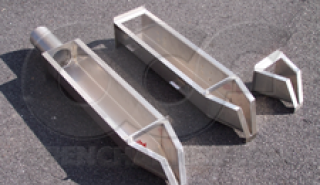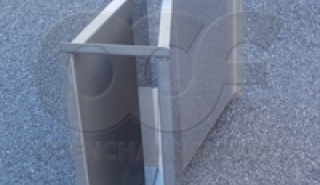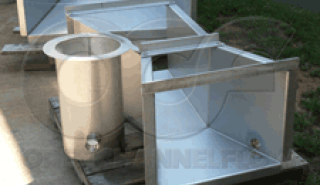Stainless steel flumes offer the ultimate in abrasion and chemical resistance when measuring open channel flows. While other materials of construction can provide some of these benefits, they either do so only partially (e.g. PVC for chemical resistance but not abrasion) or at considerable cost (e.g. epoxy-based fiberglass).
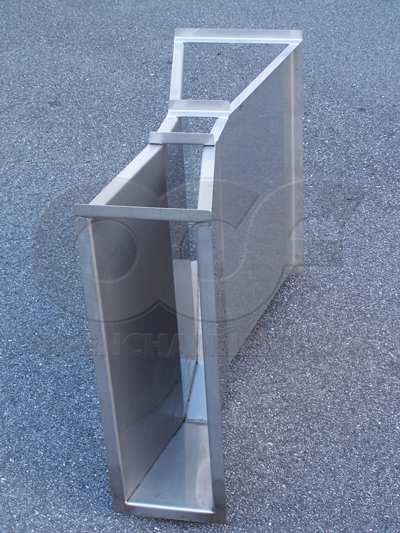
The need for abrasion and chemical resistance are most commonly required when measuring industrial flow or landfill leachate. Two industries that commonly use stainless steel flumes are the mining and chemicals industries.
Mining Applications
Discharges from mining operations can contain particularly high levels of abrasive grit and/or large, stony debris. While fiberglass – the traditional material from which flumes are made – is strong, repeated exposure to these flows will wear the gel coat from the surface of the flume. Gel coat provides not only a chemical barrier for the underlying fiberglass laminate, but also protection from U.V. deterioration. Once the gel coat is gone, the fiberglass laminate can begin to deteriorate.
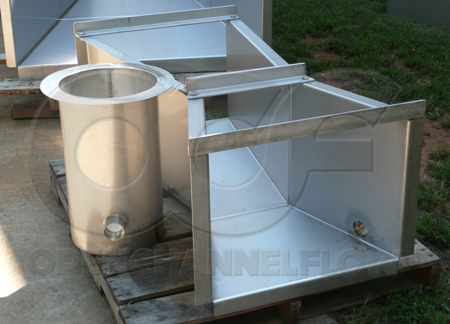
In the past, to protect the gel coat / flow surfaces, fiberglass flumes have been lined with 1/4-inch 0.635 cm] thick natural rubber sheet, but with the addition of the liner, there was then a need monitor surface weir and maintain the sheet. Stainless steel flumes, although more costly that standard fiberglass ones, solve the abrasion problem and without the introduction of a wear / maintenance item; all while being more affordable than the customized fiberglass construction.
In mining operations chemical resistance is generally not the primary concern. Instead, physical strength and resistance to abrasion are more critical. Stainless steel flumes, therefore, tend to be fabricated from T-304 stainless steel, as the enhanced corrosion resistance of T-316 stainless steel is unnecessary.
Depending upon the needs of the particular application, gauge thicknesses for stainless steel flumes tend to be from 16 gauge to 12 gauge, with thicker gauges being used for more abrasive applications.
Chemicals Industry
In industrial applications, it is common to use fiberglass flumes to measure both treated effluent as well as interplant flows. However, in applications where the flow stream contains chemicals (or concentrations of chemicals) that are corrosive to (or otherwise degrade) standard flume materials, stainless steel may be used. These sorts of corrosives containing flow streams are most commonly found in the chemicals industry.
In addition to corrosive chemicals / concentrations, chemicals industry flows may also experience temperatures exceeding 150 F (65.5 C) – the maximum operating temperature for which many common fiberglass resins are rated. While higher temperature fiberglass resins are available, when combined with need to have corrosion resistance, stainless steel can be a more economical choice as specialty resins are sold by the drum – which you end up paying for whether your flume needs all of it or not!
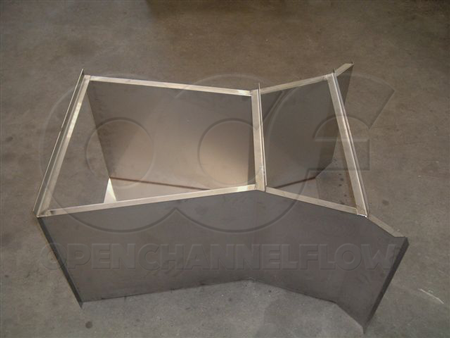
Gauge thickness is generally not a concern for chemical applications. Here it is the ability of stainless steel to resist the combination of chemicals, their concentrations, and their temperatures that are of greater importance. Thus it is common to see flumes made from T-316 stainless steel (versus the T-304 ones see in the mining industry).
Landfill Leachate
Monitoring landfill leachate is another application where stainless steel flumes are used. Here it is difficult to anticipate what chemicals / constituents / concentrations may ultimately be present in the flow stream. Landfill leachate usually contains inorganic compounds (ammonia, chlorides, sulfides, etc.), heavy metals (copper, lead, mercury), organic compounds (dioxins, PCBs) and dissolved organic mater (acids, alcohols, aldehydes) in varying concentrations. As a result, T-316 stainless steel construction is common to provide maximum chemical resistance.
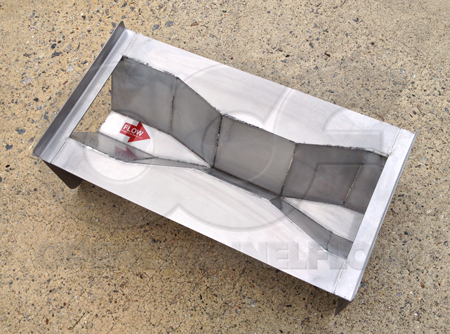
Like applications in the chemicals industry, in monitoring landfill leachate abrasion resistance is not at a premium. Flows are generally small and usually contain little in the way of grit, sand, or other abrasives. Thinner gauges of stainless steel, therefore, can be used when constructing the flume.
The Case for Other Materials
While stainless steel provides abrasion and chemical resistance, this is not to say that it is suitable for all applications. In particular, for sanitary applications, fiberglass is the still the material of choice. While T-316 grade stainless steel can meet the needs of sewage applications, stainless steel is both heavier and costlier than the traditional fiberglass construction used for flumes in sanitary applications.
Where portability is of concern – usually a consideration in remote surface water / stream gauging applications – the lightweight of fiberglass and aluminum is more important.
Stainless steel does carry a cost premium when compared to other materials. In some applications cost is the primary concern. In these applications, galvanized steel is commonly used. An example of this tradeoff can be found in water rights / irrigation applications.



